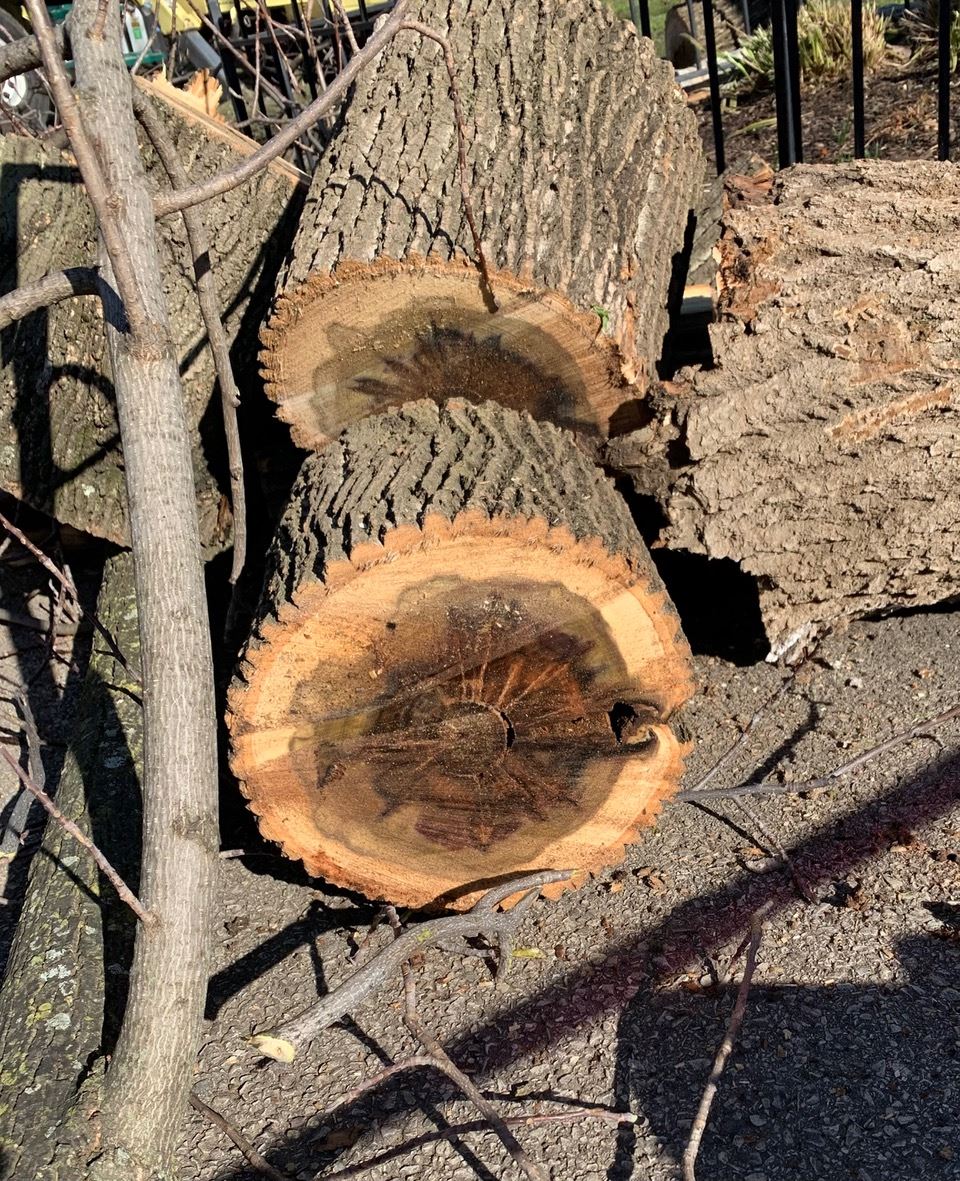Written by Susan Kahn
It was Kermit the Frog who once said, “It’s not easy being green,” but it could have been said about the Schuylkill River Park trees. Park visitors in the past week may have noticed that workers were busy pruning dead branches and removing five dead trees, most notably a stand of Tulip Poplars near 25th Street. These were just a few of 18 dead trees identified in the course of last fall’s inventory undertaken by the Arboretum. Thanks to the generosity of the Center City Residents’ Association, the Arboretum was able to tackle the first phase of the work identified by this study.
All five of the trees removed showed significant decay despite their relative youth. (See photos below.) In fact, the removed Tulip Poplars were only a quarter the age that these trees typically reach under ideal conditions. Happily, much of the wood that was removed enjoys a second life. At the nature play area at the back of the playground, tree “cookies,” stumps and twisty branches inspire imaginative play and problem solving. Dead branches reduced to wood chips will be used to support the remaining park trees.
Yet, it is worth asking why these trees and many other of our park trees enjoy such short lifespans. The answer lies predominantly in the park soil. Compaction is one of the biggest health risks to trees and is caused by excessive traffic or activity on the soil around the root zone. Compaction or compression occurs because excessive weight can press the soil particles together very tightly reducing the pore space between them which holds air and water necessary to trees’ vital functions. And our park soil is extremely compacted, not only from current uses but also from historical ones.
Beginning in 1800, the land on which the park sits was heavily industrialized. The area served the ship and barge traffic up and down the river with warehouses and brick works. This use transitioned to rail yards, slaughterhouses, and trash yards by the end of the century. By the middle of the 20th Century, most industry had abandoned the banks of the tidal Schuylkill. What remained consisted of transportation infrastructure, including rail lines that crisscrossed the area in and around the community garden. Shortly before the establishment of the park in 1966, the bowl area actually served as a paved parking lot. When the park was established, topsoil was simply deposited on top of heavily compacted soil and paving material.
As if the historical uses didn’t result in enough soil compaction, the current uses of the park continue to compact the soil. The park is enjoyed not only by people who traverse the paved pathways. The green areas are also enjoyed by picnicking families, running school children, frisbee playing young people and dog walkers, further compacting the soil in which the trees grow.
The answer is not to rope off the park from active use. Rather it is to recognize these challenges when choosing new trees and caring for existing ones. This means choosing varieties of new trees that can better tolerate compacted soil. It means relieving tree stresses by excavating soil away from root collars and removing girdling roots. Finally, it means applying liberal amounts of mulch to the root zone of our trees.
Arboretum volunteers are working to create healthy conditions for the next generation of park trees. Come out to help plant, spread mulch and grow the neighborhood canopy!
